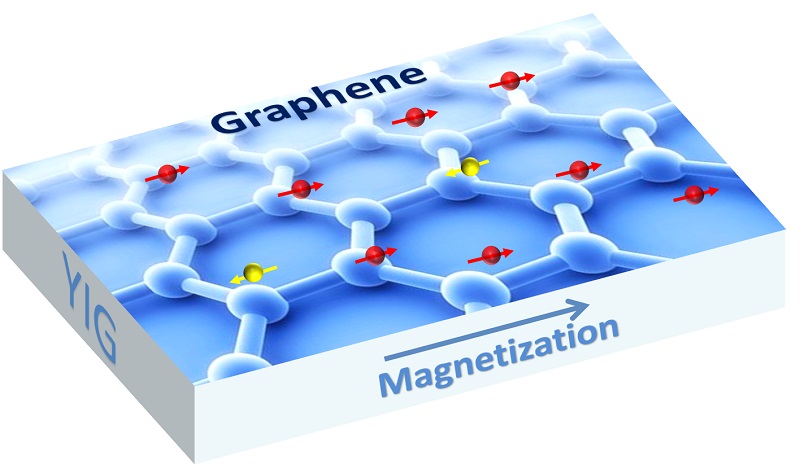GOVERNMENT
Shi makes magnetic graphene

Graphene, a one-atom thick sheet of carbon atoms arranged in a hexagonal lattice, has many desirable properties. Magnetism alas is not one of them. While magnetism can be induced in graphene by doping it with magnetic impurities, this doping tends to disrupt graphene’s electronic properties.
Now a team of physicists at the University of California, Riverside has found an ingenious way to induce magnetism in graphene while also preserving graphene’s electronic properties. They have accomplished this by bringing a graphene sheet in very close proximity to a magnetic insulator – an electrical insulator with magnetic properties.
“This is the first time that graphene has been made magnetic this way,” says Jing Shi, a professor of physics and astronomy, whose lab led the research. “The magnetic graphene acquires new electronic properties so that new quantum phenomena can arise. These properties can lead to new electronic devices that are more robust and multi-functional.”
The magnetic insulator Shi and his team used was yttrium iron garnet. The researchers placed a single-layer graphene sheet on an atomically smooth layer of this magnetic insulator. They found that yttrium iron garnet magnetized the graphene sheet. In other words, graphene simply borrowed the magnetic properties from yttrium iron garnet.
The finding has the potential to increase graphene’s use in supercomputers, as in computer chips that use electronic spin to store data.
